On this week’s Rocket Roundup, an ISRO rocket fails and Arianespace launches a big satellite. Plus, Boeing can’t seem to get their act together. And this week in rocket history, we look back at the first mission to explore all of the outer planets – Voyager 2.
Podcast
Transcript
Hello, and welcome to the Daily Space. My name is Annie Wilson and most weekdays the CosmoQuest team is here putting science in your brain.
Today, however, is for Rocket Roundup.
Let’s get to it, shall we?
After months of not launching a rocket, India finally sent one up — and Gordon jinxed it. On August 12 at 00:13 UTC, an Indian GSLV Mk II launched from the Second Launch Pad at the Satish Dhawan Space Center in southern India. Onboard was the EOS-3 satellite.
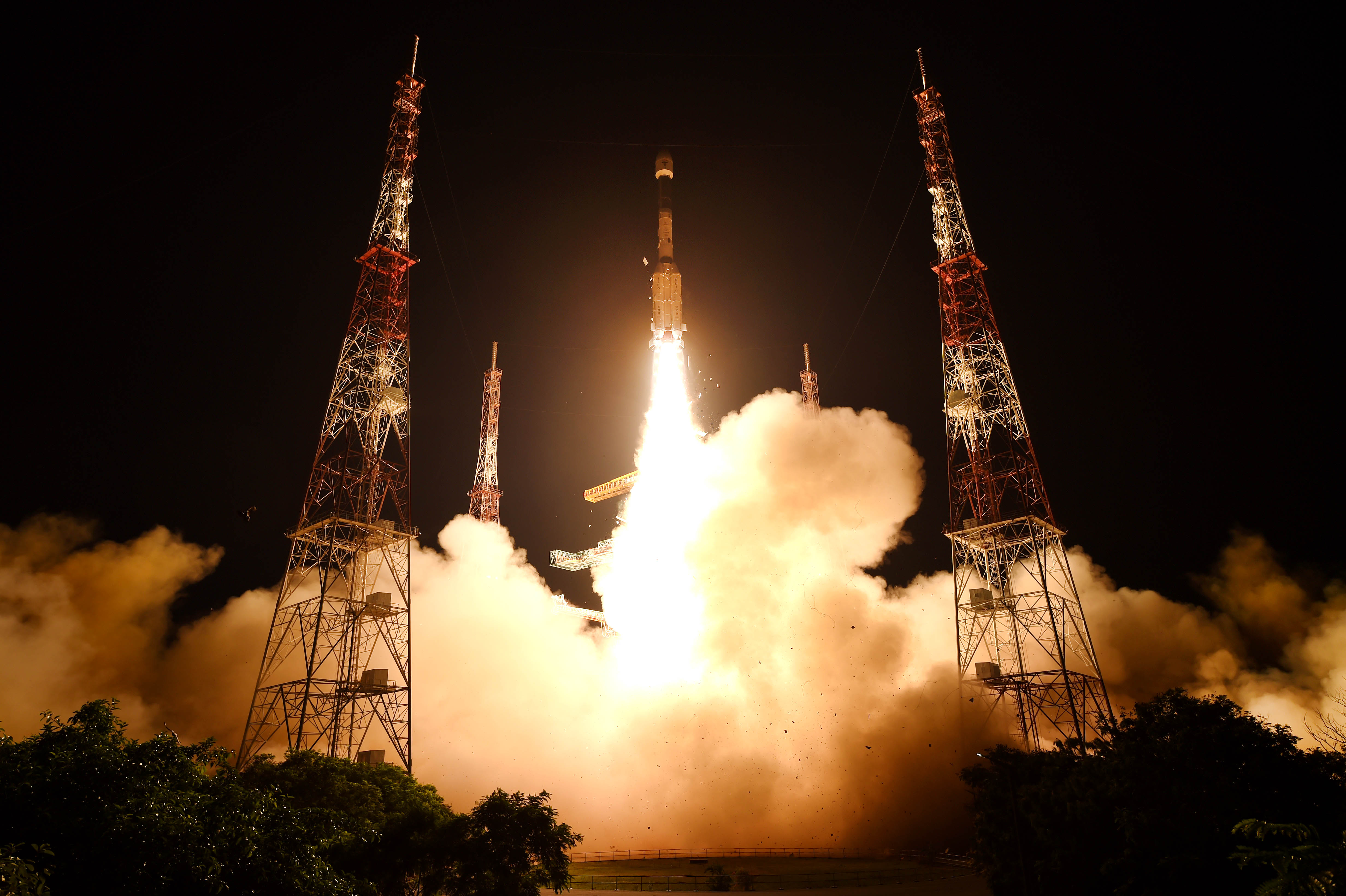
Initially, the launch looked normal through both the first-stage and second-stage burn. Then the third stage separated and appeared to ignite, but seconds afterward, the live animation began a slow roll and end-to-end pitch. The on-screen graph of the anticipated trajectory versus actual trajectory diverged, with the actual trajectory bending down back towards Earth. ISRO signed off the webcast stating that the “outcome of the mission will be determined soon”. Soon after the webcast was over, a website update and tweet stated that the “third stage ignition did not take place [at all] due to a technical anomaly”.
The satellite onboard the failed launch was EOS-3, also called GISAT-1. As an Earth-observing satellite operating in geostationary orbit, it was intended to provide 50-meter resolution multispectral images of the entire Indian subcontinent every thirty minutes.
This launch was planned for earlier in 2021 but was significantly delayed due to the impact of the novel coronavirus pandemic on India. In order to provide hospitals with oxygen, the ISRO propellant factory pivoted to producing oxygen for patients instead of rockets. ISRO engineers also came up with three different ventilator designs to meet the overwhelming demand caused by the pandemic.
Next up, a small rocket launched a powerful satellite. On August 17 at 01:47 UTC, an Arianespace Vega rocket launched the Pléiades NEO-4 imaging satellite and four CubeSats into a Sun-synchronous orbit from the Guiana Space Center in Kourou, French Guiana.
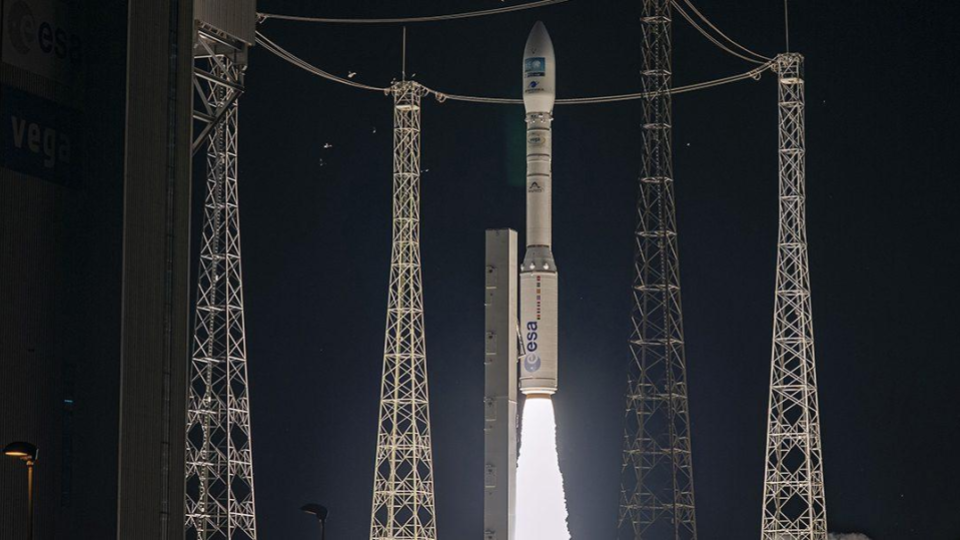
Pléiades Neo-4 is the second satellite in a new constellation of commercial high-resolution imaging spacecraft. It is designed and operated by Airbus Defense and Space and is capable of 30-centimeter ground resolution from its 700-kilometer orbit. That’s enough to resolve something the size of a demi-baguette. Currently, Vega can only lift a single 920-kilogram Pléiades Neo satellite (or 460 two-liter soda bottles) into orbit. Starting next year, the upcoming new-and-improved Vega-C rocket will be able to launch the remaining two Neo satellites.
Although the main payload was huge, Arianespace was able to fit an additional four tiny satellites onboard, one commercial and three other scientific satellites sponsored by ESA:
- RADCUBE is a 3U(nit) CubeSat designed to provide real-time monitoring of cosmic radiation and other space weather measurements. Data will be released to the public and industry.
- LEDSAT, a 1U CubeSat, is a collaboration between universities in the U.S. and Italy. It will act as a target to test systems for orbit determination, which is the term for finding out exactly what orbit an object is in around a planet. For a satellite to be observed in low-Earth orbit, it must be in sunlight while the telescope doing the observation is in darkness. The LEDSAT solves this problem by providing its own light using a combination of LEDs and retroreflectors, which are special mirrors that reflect light exactly back towards its emitter. They will also serve as a backup communication system using flashing lights.
- The third CubeSat is the Breizh Reconnaissance Orbiter 4. The 6U CubeSat has a payload built by Unseen Labs and has a commercial signals intelligence mission.
- The final CubeSat on the mission is a 2U spacecraft called Sunstorm, an ESA mission that carries an X-ray spectrometer to study coronal mass ejections which are the source of damaging solar storms on Earth.
In case you missed it, Boeing’s Starliner has been having a lot of issues. Twenty months after its near-disaster of a first test flight, the spacecraft was finally ready for another attempt, but it keeps running into issues that cause further delays.
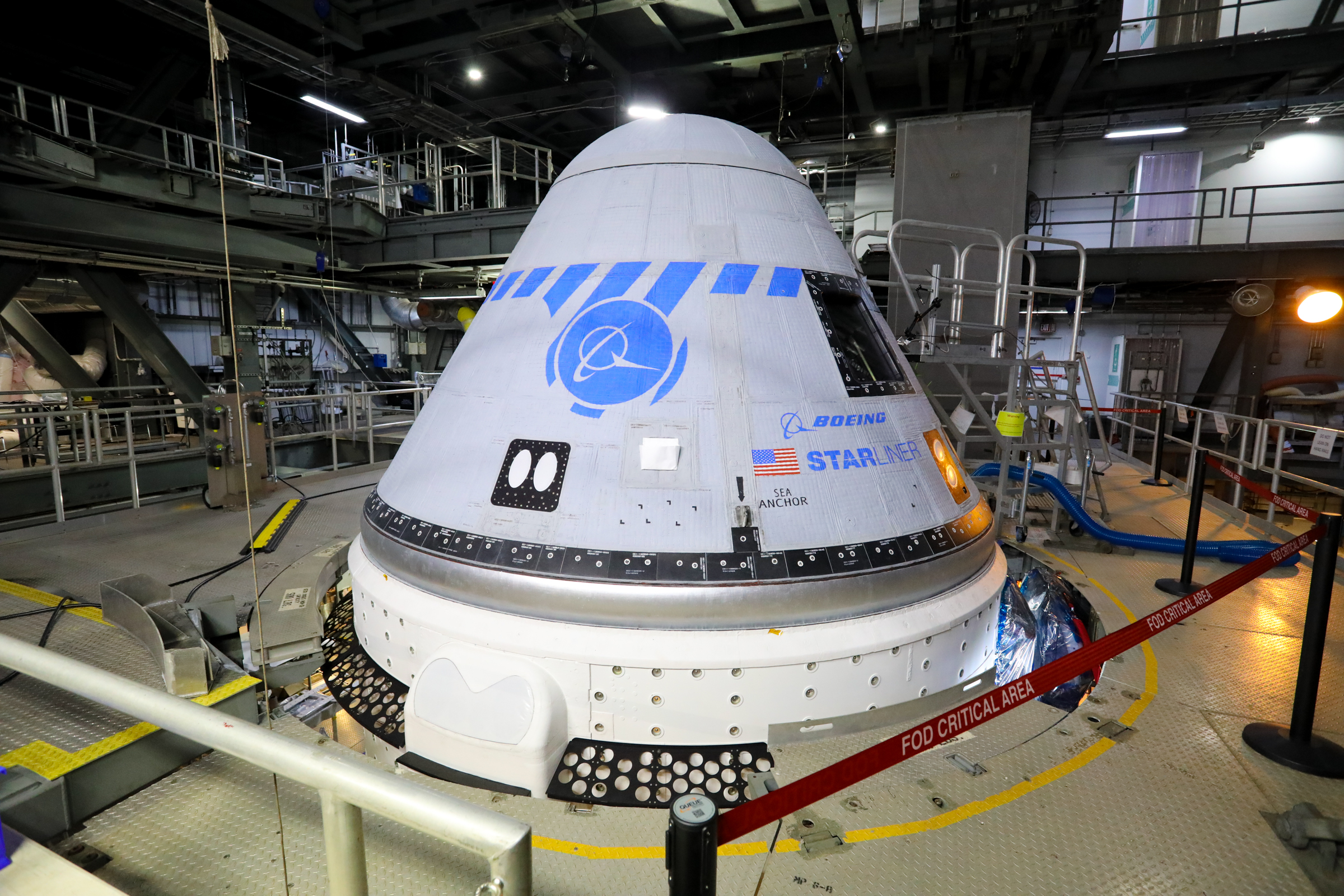
The latest delay is due to a series of thirteen stuck valves that control the flow of oxidizer — in this case, nitrogen tetroxide — from the vehicle’s propellant tanks to the reaction control system thrusters that orient it in space. The Starliner has 64 valves in its reaction control system: 24 for the oxidizer nitrogen tetroxide, 24 for the fuel unsymmetrical dimethylhydrazine, and sixteen valves for the helium gas that is used to pressurize both the propellant and the oxidizer. There are separate sets of nitrogen tetroxide and unsymmetrical dimethylhydrazine valves for the much larger launch escape engines. Only the oxidizer valves in the reaction control system were affected.
Boeing attempted to free the valves while the spacecraft was still stacked atop its Atlas V rocket at the launch facility and was able to free most of them, but as of last week, four remained stuck. Boeing used “electrical and thermal techniques” to open the valves. The company made an announcement at a press conference on August 13 that they would unstack the Starliner from its rocket and take it for further troubleshooting at its factory on Kennedy Space Center grounds. In order to access the remaining stuck valves, the capsule will be separated from its service module.
Boeing thinks the root cause of the valve sticking is atmospheric moisture mixing with an oxidizer that leaked through a seal in the valves. When moisture mixes with nitrogen tetroxide, it creates nitric acid which is what corroded the valves and stopped them from responding to commands.
Even if the valve issue is resolved quickly, there are a lot of factors that could delay Starliner’s next opportunity for a second orbital test flight. The most significant factor is NASA’s upcoming Lucy mission. Like OFT-2, Lucy needs SLC-41, the east coast Atlas V pad, for its 24-day launch window out to the Trojan asteroids, which opens on October 16. If Lucy misses this window, it will have to wait until next year to launch, and if that doesn’t happen, the next opportunity is another two years later, in 2024. So, Lucy gets the pad for as long as it needs this fall, and everyone else has to wait.
United Launch Alliance (ULA) needs seventeen days on either side of a launch period to switch between missions, according to CEO Tory Bruno, which pushes the earliest that OFT-2 can launch to the end of October, even if Lucy launches on the first day of its launch window. ULA will potentially reduce this time by using the Atlas V first stage originally stacked for OFT-2 for the Lucy mission. The second stage for OFT-2 cannot be used for Lucy as it is a special configuration for Starliner.
Meanwhile, the International Space Station (ISS) that is Starliner’s destination has a packed schedule of visiting vehicles that also restricts when it can launch.
CRS-23, the next Cargo Dragon mission to the ISS, is scheduled to launch at the end of August. CRS-23 will spend a month at the station, occupying one of the two IDA ports the Starliner needs. The other port is occupied by SpaceX Crew-2, currently set to return in November. SpaceX Crew-3 will launch after CRS-23 in late October, providing for a direct handover before Crew-2 departs. Operational crew missions take priority over an uncrewed test flight, which will delay OFT-2 to December or even early 2022.
Hopefully, this will give Boeing the time they need to fix all the issues with the OFT-2 spacecraft.
This Week in Rocket History
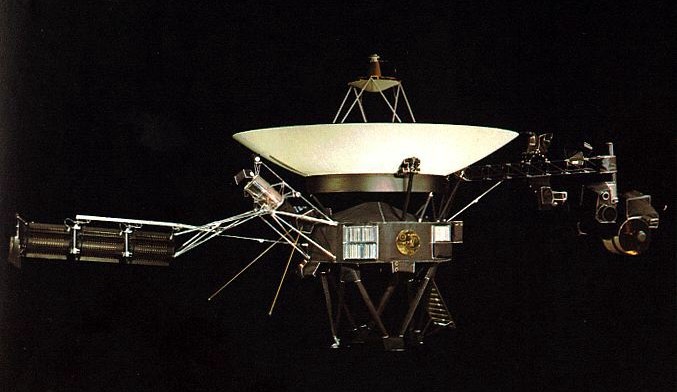
This week in rocket history, the launch of Voyager 2.
The problem with space is that it’s big. Like, really big! It takes light almost an hour to get to the Earth from Jupiter, and that’s the closest of the outer planets. In terms of space missions, this means that visiting the outer planets either requires very long transit times or very large launch vehicles. Long transits could mean decades, likely resulting in the original science team retiring before the spacecraft arrives. Large launch vehicles are risky and have a high price tag, severely limiting how many missions we can afford to launch. What we needed was a game changer, something that would let us use smaller rockets and still get there quickly; that game changer was the gravitational assist.
In the early years of the space race, mathematicians set to work coming up with a method to get to the outer planets more rapidly. The first breakthrough was in 1961 when then-graduate student Michael Minovich presented a paper describing a gravity assist. Here’s how he did it.
His first task was to calculate a change in orbit when a spacecraft encountered a planet – the so-called two-body problem. (This method is similar to how the game Kerbal Space Program calculates orbits.) After arriving at a solution, he tried a much more difficult task – the three-body problem. The three-body problem calculates a two-body encounter in the context of both bodies starting in orbit of the Sun. This is a much harder calculation, but the result was spectacular: Minovich demonstrated how a spacecraft could change its orbit using the encounter. This can be used to effectively fling the spacecraft into a higher orbit by stealing a tiny amount of the planet’s rotation.
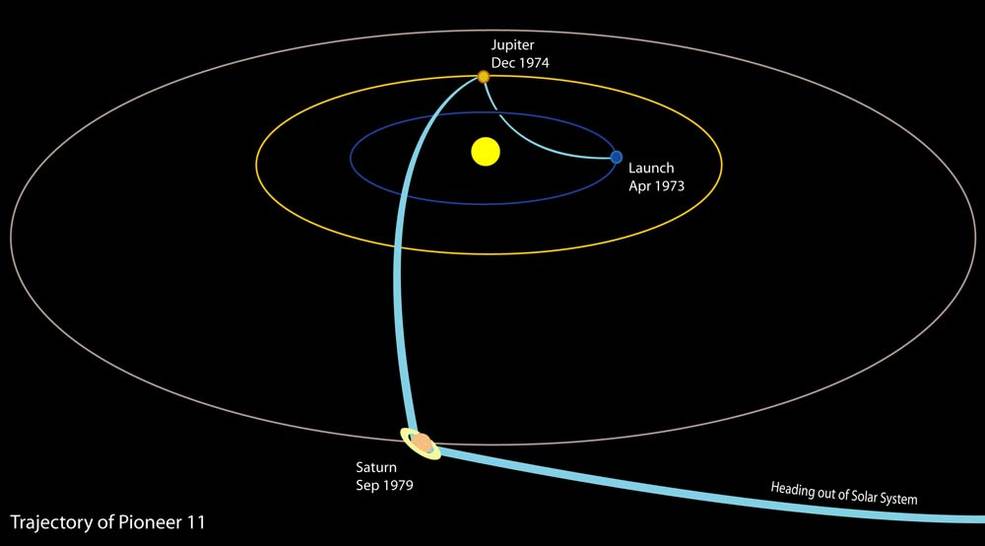
Minovich’s work gained prominence when a scientist named Max Hunter used gravity assists to design a Grand Tour mission to the outer planets in 1964; the proposed mission only required five kilograms of propellent rather than the 145 metric tons required without using gravity assists. In 1965 Gary Flandro, a NASA engineer, identified a once-in-176-year opportunity to visit all four outer planets in a single mission, an opportunity that would happen twelve years later in 1977.
The gravity assist concept was demonstrated on the Pioneer 11 mission, which used it to do a massive handbrake turn in space to go from Jupiter to Saturn when the mission was only planned to go to Jupiter.
Initially, the Voyager program was only funded to visit Jupiter and Saturn and was called Mariner Jupiter-Saturn. But JPL was sneaky and designed the spacecraft to last long enough to do the full Grand Tour.
The next thing to determine was which trajectories to use. NASA engineers looked at ten thousand different trajectories. Very important to the science goals of the mission was a close encounter with Saturn’s moon, Titan. Titan was the only moon known to have an atmosphere at the time. Flying by Titan, however, would prevent the spacecraft from visiting Uranus and Neptune because the trajectory to get close to Titan would send it out of the ecliptic, the plane in which all of the planets orbit the Sun. One spacecraft would go to Jupiter, Saturn, and Titan and out of the ecliptic. The other would go to Jupiter, Saturn, Uranus, and Neptune. If the first spacecraft failed to get to Titan, the other would go to Titan and forgo the rest of the Grand Tour.
One major engineering consideration for spacecraft design involved the distance they would travel. They couldn’t use solar panels billions of kilometers from the Sun, so they would need nuclear generators known as Radioisotope Thermoelectric Generators or RTGs. These produce tiny amounts of electricity from radioactive decay over long periods of time. The heat is turned into electricity with a series of devices known as thermocouples which generate electricity based on their temperature.
That’s the trajectory and the spacecraft itself sorted, what about the science?
NASA put out a formal Request for Proposals in April 1972 in the following investigation areas: imaging, radio science, infrared and ultraviolet spectroscopy, magnetometry, charged particles, cosmic rays, photo-polarimetry, planetary radio astronomy, plasma, and particulate matter. They received over 200 responses from which ninety scientists were invited. These scientists were further organized into twelve teams, each in charge of a different instrument. You can read more about the different instruments in the Patreon bonus content for this week’s episode.
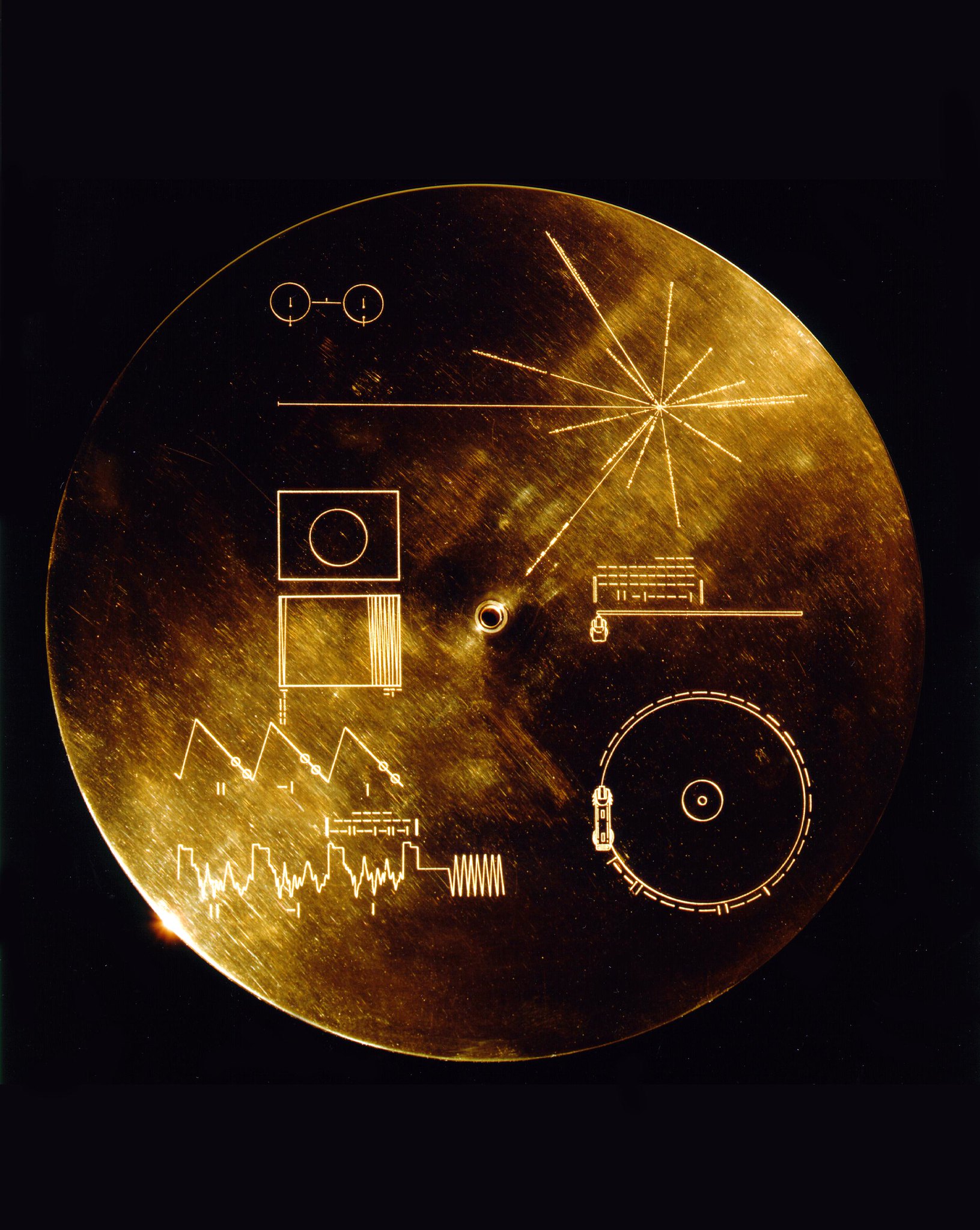
The instruments for the two spacecraft were chosen years in advance based on initial observations by Pioneer 10 and 11 at Jupiter and Saturn. For example, a planned ultraviolet polarimeter for Voyager was removed in favor of a plasma experiment after Pioneer 10 revealed a thousand times more intense radiation environment around Jupiter than expected.
One of the more famous things on Voyager 2 wasn’t an instrument and didn’t have a Principal Investigator — the “Sounds of Earth” record, more commonly called the Voyager Golden Record. Created by a committee led by Carl Sagan, it was included on the off chance that, if an intelligent species encountered the spacecraft millennia in the future, it would tell them something about humanity. It was a 32-centimeter wide gold-plated copper disk that had two hours of content recorded onto it, including nature sounds, music, and greetings in sixty languages.
On the outside of the disk were diagrams depicting human beings and different fundamental concepts in math and science as well as instructions on how to play it. In forty thousand years, Voyager 2 will pass within two light-years of the star Ross 248 in the constellation Andromeda.
Voyager 2 was launched on August 20, 1977, to go on the full Grand Tour trajectory. Its Titan IIIE rocket’s maximum performance was barely able to put it on the planned trajectory to eventually meet up with Uranus. To find out what happened with the rest of the mission and with Voyager 1, stay tuned to Rocket Roundup for future episodes of This Week in Rocket History.
Statistics
To wrap things up, here’s a running tally of a few spaceflight statistics for the current year:
Toilets currently in space: 8: 4 installed on ISS, 1 on the Crew Dragon, 1 on the Soyuz, 1 on the Shenzhou, and 1 on Tianhe.
Total 2021 orbital launch attempts: 78, including 5 failures
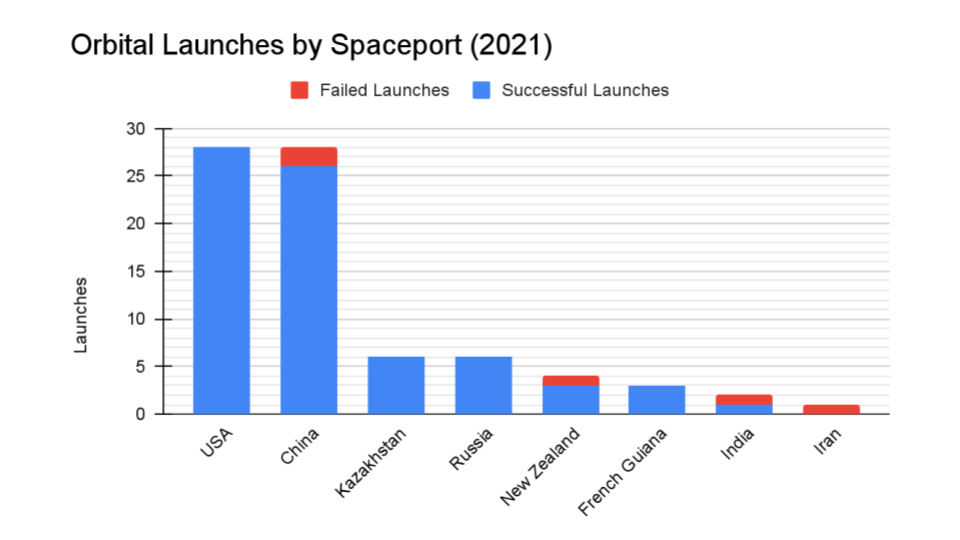
Total satellites from launches: 1316
We keep track of orbital launches by where they launched from, also known as spaceport. Here’s that breakdown:
USA: 28
China: 28
Kazakhstan: 6
Russia: 6
New Zealand: 4
French Guinea: 3
India: 2
Iran: 1
Your random space fact for this week is that NASA hired surfers in Southern California to install the insulation on the common bulkhead of the Saturn 5 second stage because the insulation was similar to the material the surfers made their surfboards out of.
This has been the Daily Space.
Learn More
ISRO Rocket Fails to Reach Orbit
- ISRO press release
- GISAT 1 info page (Gunter’s Space Page)
- Kerala to get oxygen supplies from ISRO (The Hindu)
- Launch video
Arianespace Launches Commercial Imaging Satellite
- PDF: VV19 press kit (Arianespace)
- Pléiades-Neo info page (Gunter’s Space Page)
- RADCUBE info page (Gunter’s Space Page)
- LEDSAT info page (Gunter’s Space Page)
- Breizh Reconnaissance Orbiter (Gunter’s Space Page)
- Launch video
Boeing Starliner Delayed by Months
- Boeing Works to Open Starliner Valves, Determine Cause of Valve Issues (Boeing)
- Starliner Returning to Factory to Resolve Valve Issue (Boeing)
- Boeing to Build Private Space Taxis in Old NASA Shuttle Hangar (Space.com)
- NASA Announces Date for SpaceX’s 23rd Cargo Resupply Mission (NASA)
This Week in Rocket History: Voyager 2
- Slingshot Magic (Gravity Assist)
- PDF: Fast Reconnaissance Missions to the Outer Solar System Utilizing Energy Derived from the Gravitational Field of Jupiter (Gravity Assist)
- Voyager: The Grand Tour of Big Science (NASA)
- Interstellar Mission (NASA)
Credits
Host: Pamela Gay
Writers: Gordon Dewis, Pamela Gay, Erik Madaus, Ally Pelphrey, and Annie Wilson
Audio and Video Editing: Ally Pelphrey
Content Editing: Beth Johnson
Executive Producer: Pamela Gay
Intro and Outro music by Kevin MacLeod, https://incompetech.com/music/


 We record most shows live, on Twitch. Follow us today to get alerts when we go live.
We record most shows live, on Twitch. Follow us today to get alerts when we go live.